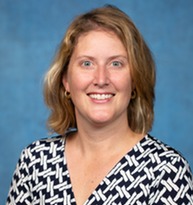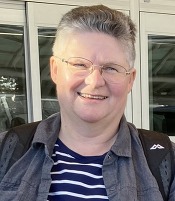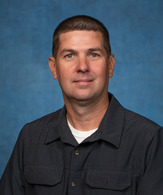|
Collage of photos from the 2024 Emergency Preparedness Coordinators' Workshop.
"Ready Today, Prepared Tomorrow: Public Health Leadership in Action" was the resonating tagline at the recent Emergency Preparedness Coordinators' Workshop held over three days in Breezy Point, Minn. This event, which brought together over 160 participants in both virtual and in-person formats, marked a significant moment for local and tribal public health emergency preparedness and response efforts. The workshop aimed to enhance leadership skills, understand the Public Health Response Readiness Framework; and provide training on wellness; diversity, equity, inclusion, and accessible (DEIA) resources; technology; communication; and new emergency preparedness concepts.
The inclusive and diverse planning process, spanning several months, involved a team of 18 members representing various units from Minnesota Department of Health (MDH), local public health (LPH), tribal health (TH), and rural health. This collaborative effort ensured the workshop's success in promoting skills and building a sense of community among attendees. A special DEIA subcommittee, comprising members from MDH and LPH, was also integral to this year's planning, guaranteeing the workshop was equitable and accessible for all participants.
Featuring speakers from various backgrounds, including MDH, University of Minnesota (UMN), LPH, and national speakers, the workshop covered a range of topics related to personal and professional growth. Dr. Carolyn Porta discussed trauma-informed and emotionally intelligent practices, Ted Schick focused on servant leadership, and Stephanie McGovern explored personal power dynamics. These sessions provided attendees with valuable insights and strategies for enhancing their leadership skills and personal development, offering a diverse range of perspectives and approaches to these important topics.
The workshop received great feedback, with one attendee stating, “I wanted to take a moment to express how much I enjoyed the Emergency Preparedness Coordinator Workshop. Each session was enlightening, and I learned a tremendous amount from the discussions and activities. I'm truly grateful for the hard work and planning that made this event so beneficial.” Additionally, one presenter highlighted the MDH Emergency Preparedness Coordinators' Workshop in their bimonthly national newsletter: Building Trust Takes More Than Words.
Thank you to all that made this a successful workshop!
Rural Communications Specialist Cory Couillard and attendees at the CERC training in Bemidji, Minnesota.
The Emergency Preparedness and Response Division, in collaboration with the MDH Communications Office, recently completed five Crisis and Emergency Risk Communication (CERC) trainings across the state to enhance communication strategies during emergencies. Using sections from the Centers for Disease Control and Prevention (CDC) CERC curriculum, participants attended a six-hour training that offered an in-depth overview of risk communication principles, managing information, talking to the media, and how to effectively communicate with various populations.
Led by Doug Schultz, Cory Couillard, and Andrea Ahneman from the Communications Office and supported by Christy Becthold and Deb Radi from EPR, the training sessions were the first to be held since before the COVID-19 pandemic. With over 100 attendees, the trainings were a success.
“We were very excited to have this opportunity to offer these in-person CERC trainings for our local public health and tribal health partners,” said Andrea Ahneman, media and planning director at MDH. “CERC is all about getting the right information to the right people at the right time, and these local partnerships are vital to success during an emergency, so we really appreciate people working with us to build and practice these skills.”
Those interested in learning more about CERC can view resources and materials on CDC’s Crisis and Emergency Risk Communication (CERC) website.
Founded in wake of Sept. 11, 2001, the Hospital Preparedness Program (HPP) is the only source of federal funding that supports regional health care system preparedness. As the primary recipient of HPP funding in Minnesota, MDH supports the ability of health care, local public health (LPH), emergency management (EM), emergency medical services (EMS), long-term care, and others to prepare for, respond to, and recover from emergencies and disasters. MDH manages health care coalitions (HCCs) in eight geographic regions of the state: Metro, Northwest, Northeast, West Central, Central Southwest, Southeast, and South Central. These coalitions are collaborative networks of healthcare organizations and their public and private sector response partners, including hospitals, emergency management agencies, community health boards, long-term care, and emergency medical services (EMS). The objectives of the HCCs are to promote situational awareness, facilitate resource sharing/coordination, and facilitate information sharing.
Read more to learn about each team member, their favorite ice cream/ice cream shop, and statue!

Erin McLachlan is the hospital preparedness program manager for MDH. Erin has been with the health department on and off for 10 years. When not at MDH, Erin was the director of emergency management and business continuity for the West Coast at NBCUniversal and the executive director of the regional catastrophic planning team preparing for catastrophic disasters in New York, New Jersey, Connecticut, and Pennsylvania. In 2011, Erin went abroad to South Sudan with Doctors Without Borders.
Erin’s favorite ice cream shop is Pumphouse Creamery in Minneapolis. She recommends trying their lemon infused olive oil and sea salt ice cream. Her favorite statue is Paul Bunyan’s sweetheart, Lucette, located in Hackensack, Minn.
|

Alex Waterman is the medical surge coordinator for HPP and has been with MDH for eight years. Alex's focus is to make sure the health care coalitions have plans to support their members, particularly health facilities, and navigate various situations. A good portion of the grant focuses on preparing health care systems for all sorts of medical surge events (e.g., pediatric surge, burn surge, etc.) Two special projects in this area include high consequence infectious disease work and crisis standards of care. Both projects frequently have her working with other divisions within MDH, which she enjoys since it incorporates her education in critical care nursing and public health.
Alex's favorite roadside statue is Salem Sue located in North Dakota. Her favorite ice cream shop is Sebastian Joe's in Minneapolis.
|

Walter James is the coordinator for HPP, a position he has held since joining MDH in 2022. His many tasks and duties include working with the Regional Health Care Preparedness Coordinators (RHPCs) on grant deliverables and HPP-related projects, which in the past year have included health equity capacity building, strategic planning for 2024-2029, and workshops for health care facilities on continuity of operations planning and emergency preparedness planning. He has also supported the COVID-19 Telehealth Test-to-Treat program.
Prior to joining MDH the during COVID-19 response, Walter spent 15 years working in international humanitarian response, responding to emergencies involving armed conflict, mass displacement, natural disaster, and infectious disease epidemics across five continents. His hobbies include eating street food and recovering from tropical diseases.
Walter lives in Saint Paul with his wife, son, and dog. His favorite ice cream shop is Sebastian Joe's and his favorite roadside statue in Minnesota is the USS Swordfish Memorial (SS193) located at Como Park in St. Paul.
|
|
Toby McAdams joined the EPR team in 2007, specifically with the Partner Alerting and Communication Team (PACT). She is the only remaining member from that team.
In 2011, she became the Minnesota Health Alert Network (HAN) coordinator. She also provides support for the EPR website, SharePoint, PartnerLink, REDCap, Tableau and Smartsheets programs.
Toby's favorite ice cream is Peppermint Stick – vanilla ice cream with pieces of peppermint stick candy, which she can only find in grocery stores seasonally.
|
|
 |

Greg Wocken is the system administrator for the MNTrac communications platform. MNTrac collects statewide hospital bed availability data, and enables regional response partners to send alerts, view regional hospital statuses, track specialty availability, and communicate regionally and statewide during responses. Greg earned his Associates degree in Fire Fighting from Lake Superior College in Duluth, then his Bachelor’s degree in Business Management from St. Cloud State University (SCSU). Greg worked with the St. Cloud Fire Department to implement fire and EMS incident reporting and Geographic Information Systems (GIS). Once graduated from SCSU, Greg went on to work for the largest EMS software provider in the nation, which also builds and supports fire, licensing, and other hospital-based software products. Greg led a technical support team, and traveled nationwide to train fire departments and EMS agencies how to best use their new technologies. Five years later, Greg arrived in the Emergency Preparedness and Response division at MDH to support the MNTrac system. For the past seven years, Greg has worked with Minnesota’s eight Regional Health Care Coalitions to streamline and enhance data collection needs during emergencies.
Greg's favorite ice cream shop is Tip Top in Osakis, Minn. and his favorite statue is the Stonecutter statue in Waite Park, Minn.
|
|
John Bowen is the all-hazards planner with 23 years of emergency management and public health experience. He has been with EPR since May 2023. John is a graduate of Minnesota State University, Mankato (GO MAVRICKS). When not working, John and his family, including three bulldogs (two English, one Frenchie) spend time outdoors, camping, fishing, and spending time in Canada and Mexico.
John's favorite ice cream shop is Up North Gifts/Sweets N Such in Emily, Minn. His favorite statue is the World War II Memorial in Washington D.C.
|
|
 |

Marlee Etchison is an HPP planner who works on medical surge aspects of the HPP grant. Marlee works on surge events related to pediatrics, infectious disease, radiation, and chemical emergencies. Marlee earned her Bachelor of Arts degree in child psychology degree from the University of Minnesota - Twin Cities. While earning her Child Psychology degree, she also pursued a minor in Public Health. Marlee then went on to receive her Master's in Public Health (MPH) from the University of Southern California. Marlee has been with MDH for two years and works with the eight Regional Health Care Coalitions to enhance communications and preparedness plans during emergencies.
Marlee's favorite roadside statue is Minnesota's largest ball of twine in Darwin, Minne., and her favorite ice cream flavor is chocolate peanut butter.
|
Current projects led by HPP in Minnesota encompass a range of initiatives aimed at enhancing emergency preparedness and response across health care facilities in the state. One major endeavor involves the enhancement of the MNTrac system, an encrypted communication platform utilized by Health Care Coalitions (HCC’s) to alert partners, collect and analyze bed capacities, and track patients during emergencies. This project, supported by carry forward funding, seeks to integrate real-time bed availability data into MNTrac, empowering HCCs and their partners to make timely and informed decisions during emergency responses.
In addition to enhancing MNTrac, HPP is actively engaged in providing emergency preparedness training for health care facilities. The training focuses on equipping staff from critical-access hospitals, clinics, and long-term care facilities with the knowledge and skills necessary for effective emergency preparedness planning. Additionally, HPP is collaborating with Vital Learning Strategies, LLC to develop and conduct in-person workshops throughout Minnesota on basic emergency preparedness planning for health care facilities. These workshops aim to address the limited training available to people delegated to emergency preparedness, especially in Greater Minnesota hospitals, clinics, and long-term care facilities.
Another key focus of HPP is the development of a Continuity of Operations Planning (COOP) toolkit tailored for rural health care facilities, including critical access hospitals and long-term care facilities. This toolkit, designed to be simple, scalable, and specific to the context of rural health care, will provide in-person training and technical support to help these facilities develop and integrate COOP into their emergency preparedness efforts. HPP is also working to identify and address health equity disparities in health care emergency preparedness across the state. Collaborating with All Clear, HPP aims to embed health equity into HCC business practices, plans, and governance structures, ultimately reducing health care disparities and inequities among vulnerable and at-risk populations.
 |
Check out this great learning opportunity for all public health professionals! The University of Minnesota’s School of Public Health, in collaboration with Emergency Preparedness and Response Division, is offering self-paced e-learning courses like "Legal Basis for Public Health Law" and "Psychological First Aid: A Community Supported Model." These courses are free, open to anyone, and designed for working professionals to earn Continuing Education Units (CEUs) at their own pace. In addition to e-learning courses, there are instructional games and simulations available for an interactive learning experience, such as "Outbreak at Watersedge" and "Disaster in Franklin County," allowing learners to apply knowledge, develop critical thinking skills, and practice decision-making. More information, additional course listings, and how to earn CEUs, can be found on the continuing education website: Courses - Continuing Education and Outreach - School of Public Health - University of Minnesota (umn.edu)
|